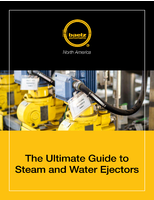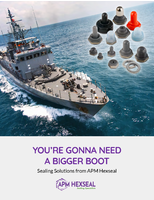ASTM Nanotechnology Standard focuses on zeta potential.
Press Release Summary:
ASTM E2865, Guide for Measurement of Electrophoretic Mobility and Zeta Potential of Nanosized Biological Materials focuses on zeta potential in systems containing biological material, such as proteins, DNA, liposomes, and other organic materials. Developed by Subcommittee E56.02, standard would be used by protein formulation personnel in pharmaceutical industry – particularly those concerned with protein therapies and shelf life stability of preparations.
Original Press Release:
New ASTM Nanotechnology Standard Focuses on Zeta Potential of Biological Materials
W. CONSHOHOCKEN, Pa. – Zeta potential provides a guide to the stability of solid or liquid particles in a liquid system, such as intravenous foods. A new ASTM International standard focuses on the zeta potential in systems containing biological material such as proteins, DNA, liposomes and other organic materials.
The new standard, ASTM E2865, Guide for Measurement of Electrophoretic Mobility and Zeta Potential of Nanosized Biological Materials, was developed by Subcommittee E56.02 on Characterization: Physical, Chemical and Toxicological Properties, part of ASTM International Committee E56 on Nanotechnology.
"Materials and molecules in biological media, such as proteins, are often labile, which means they fall apart easily, especially under the influence of an electrical field,” says Alan Rawle, Ph.D., applications manager, Malvern Instruments Inc., and an E56 member. “ASTM E2865 deals with the intricacies and difficulties of measuring zeta potential in biological media.”
As an example, Rawle notes soya bean emulsions (lipids) that are used as intravenous foods for hospital patients.
“Small changes in pH or the presence of calcium ions from hard water can cause agglomeration of such materials with potentially disastrous effects on the health of the patient,” says Rawle.
Users of ASTM E2865 would include protein formulation personnel in the pharmaceutical industry, particularly those concerned with protein therapies and shelf life stability of preparations.
All interested parties are invited to participate in the standards developing activities of E56.
To purchase ASTM standards, visit www.astm.org and search by the standard designation, or contact ASTM Customer Relations (phone: 877-909-ASTM; sales@astm.org). ASTM International welcomes participation in the development of its standards. For more information on becoming an ASTM member, visit www.astm.org/JOIN.
ASTM International is one of the largest international standards development and delivery systems in the world. ASTM International meets the World Trade Organization (WTO) principles for the development of international standards: coherence, consensus, development dimension, effectiveness, impartiality, openness, relevance and transparency. ASTM standards are accepted and used in research and development, product testing, quality systems and commercial transactions.
For more news in this sector, visit www.astm.org/sn-medical or follow us on Twitter @ASTMMedical.
ASTM Committee E56 Next Meeting: Nov. 12-13, November Committee Week, Atlanta Ga.
Technical Contact: Alan Rawle, Ph.D, Malvern Instruments Inc., Westborough, Mass., Phone: 508-768-6434; alan.rawle@malvern.com
ASTM Staff Contact: Kathleen McClung, Phone: 610-832-9717; kmcclung@astm.org
ASTM PR Contact: Barbara Schindler, Phone: 610-832-9603; bschindl@astm.orgÂ




